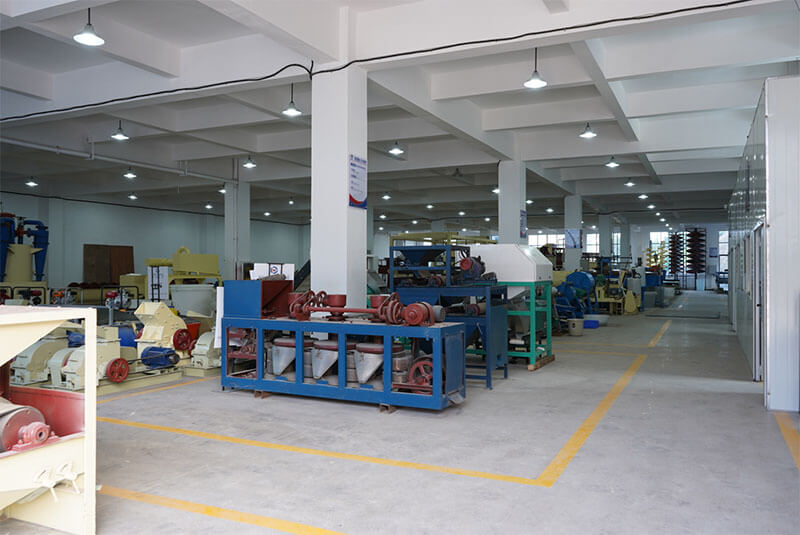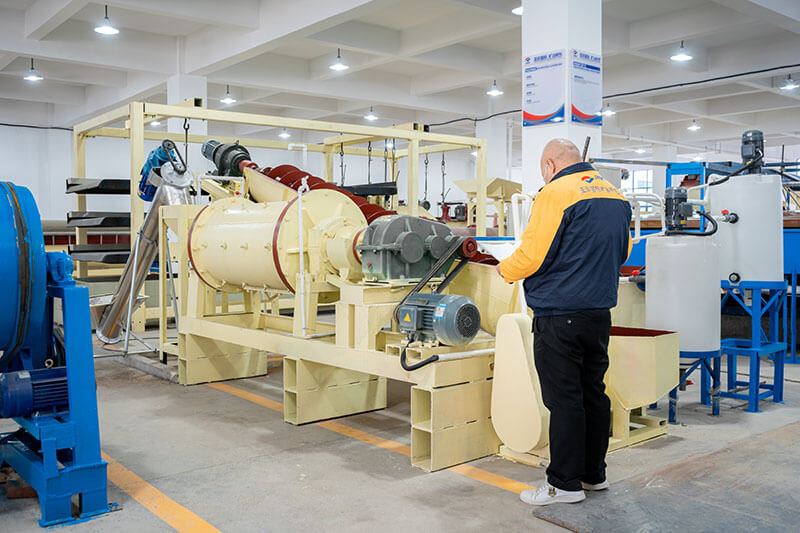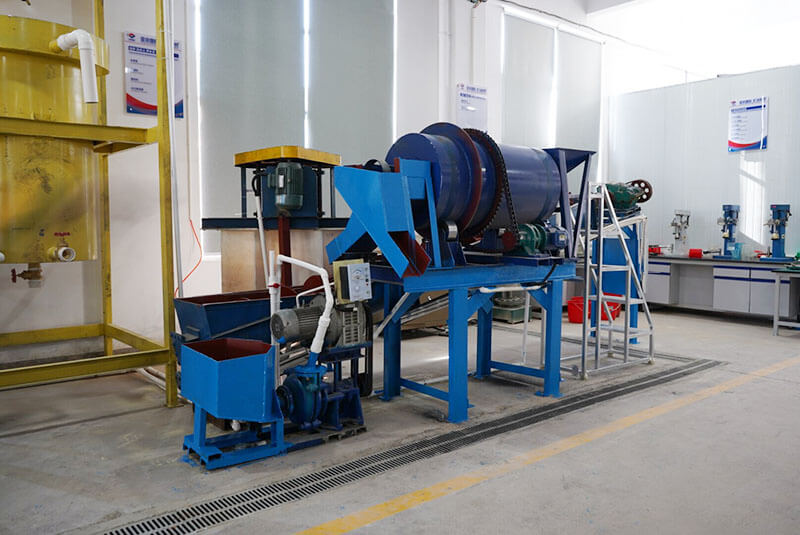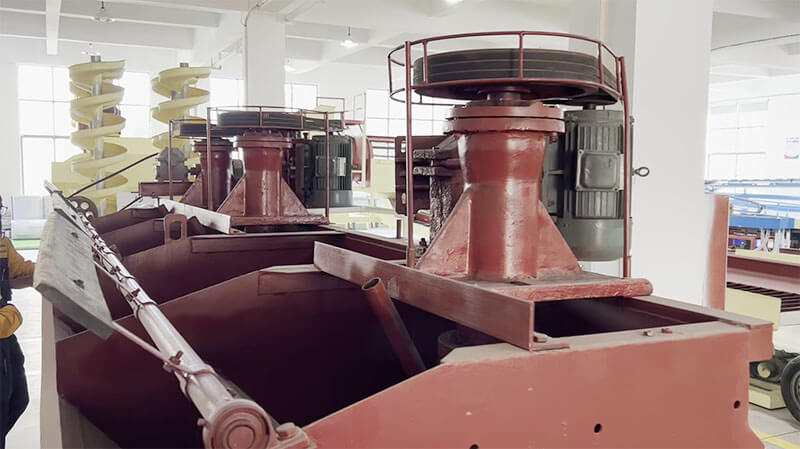Fluorite is an important non-metallic mineral raw material widely used in industries like chemical, steel, aluminum smelting, ceramics, etc. It is the raw material for preparing fluorine. With the development of technology, the application of fluorite in high-tech industries is gradually increasing, becoming an essential strategic mineral resource. Through beneficiation experiments, it provides a basis for the design of beneficiation plants. The properties of ores in different regions are constantly changing, and their beneficiation processes and conditions are also different. Before developing each type of ore, it is necessary to conduct a beneficiation experiment, rather than simply applying other beneficiation processes. What machines are for the beneficiation experiment of fluorite ore?
Fluorite Ore Experimental Equipment
This fluorite ore experiment includes lab crushing, grinding, flotation process.
1. Laboratory jaw crusher-Fluorite Ore Experimental Equipment
Laboratory jaw crusher is one of the equipment for crushing materials in laboratories. It is suitable for medium or fine crushing, and the jaw crusher has a high production capacity, making it a relatively traditional stone laboratory crusher. It is a primary process of breaking large pieces of material into small particles.
Application: The jaw crusher is widely used in various buildings, aggregate crushing lines, and crushing sections in the mineral processing industry. It is suitable for crushing granite, marble, basalt, limestone, quartz stone, etc.
Process: Place 100mm fluorite ore into the jaw crusher’s feeding port, and starting the machine for crushing, the two jaw plates press against each other, breaking the material into small particles and crush it to 0-10mm, and then discharge it from the discharge port.
2. Laboratory ball mill-Fluorite Ore Experimental Equipment
The small lab ball mill is a small-scale production and ultrafine grinding mixing equipment in the laboratory. This machine has a beautiful and novel appearance, compact structure, convenient operation, high work efficiency, and uniform grinding of fine particles. The small ball mill used in experiments is the preferred equipment for scientific research, teaching, and production.
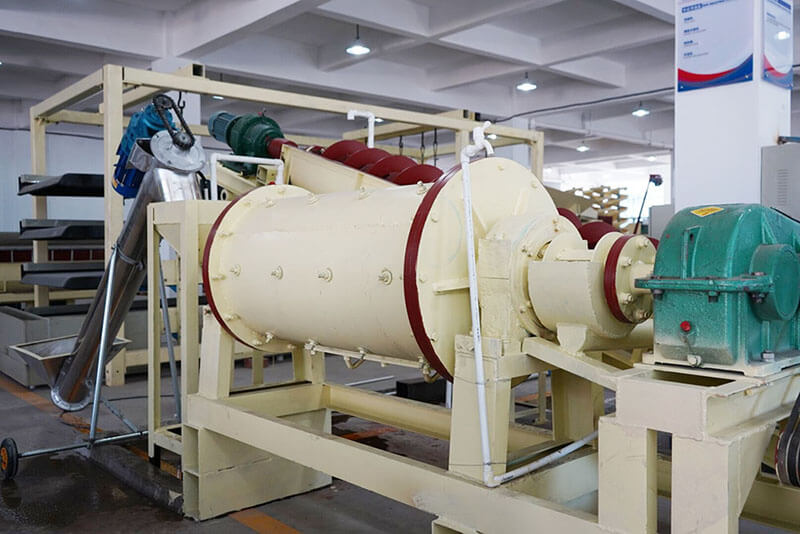
- Purpose: To crush the fluorite ore to 200 mesh for the next flotation test.
- Experimental process: In fluorite ore beneficiation, ball mills are for grinding materials, making the finished product 0-1mm or finer. Pour 0-10mm of the material into a ball mill and add grinding steel balls. At this point, the ball mill rotates continuously, and the grinding steel ball inside will mill the material into powder.
- Ball mills are suitable for grinding minerals like rock gold, copper, and other metal mines.
Types of laboratory ball mill machines
- The laboratory drum-type ball mill, also known as the laboratory roller ball mill, is a flexible, reliable, and compact ball mill that accurately amplifies experimental results into production. It is designed for crushing, grinding, dispersing, and emulsifying metal and non-metal minerals laboratory research. The working principle of it is to use abrasive and samples to roll at high speed in the grinding tank, the generated strong shear, impact, and rotation force makes the material to be crushed, ground, dispersed, and emulsified.
- A laboratory planetary ball mill is an instrument that grinds experimental samples or production samples into colloidal particles and mixes, homogenizes, and disperses them for analysis. This instrument is for laboratory use in scientific research institutions, universities, and enterprises. This machine has the advantages of small size, full functionality, high efficiency, low noise, and wide use. The working principle of it is to install four ball milling cans on a large rotary table. When the rotary table starts to rotate, the ball-milling cans rotate around the axis of the rotary table and their axis, performing a planetary motion. The transmission ratio between revolution and autobiography is 1:2. The grinding media in the ball milling tank collide with each other during the high-speed motion to grind and mix the sample.
- The laboratory stirring ball mill is a vertical spiral grinding ball mill suitable for grinding fine-grained minerals. It is composed of a stationary grinding cylinder filled with small diameter grinding media, a stirring device, and other auxiliary devices (such as circulation devices, cooling devices, timing devices, speed control devices, etc.), the grinding efficiency is very high, and the crushing particle size is small, which effectively meet various process parameter requirements and simulate various indicators in production. At the same time, due to its advantages of small batch size, low power consumption, and low price, it is a good choice for schools’ research departments and companies for researching crushing processes, new materials, and coatings. The lab ball mill has a wide application in the production of various ultrafine powders such as zirconium silicate, zirconia, ceramics, chemical engineering, electronic materials, magnetic materials, papermaking, coatings, non-metallic minerals, new materials, graphite, calcium carbonate, pharmaceuticals, etc.
- Besides, there are tank grinding ball mills, vibrating ball mills, conical ball mills, etc.
3. Laboratory flotation machine-Fluorite Ore Experimental Equipment
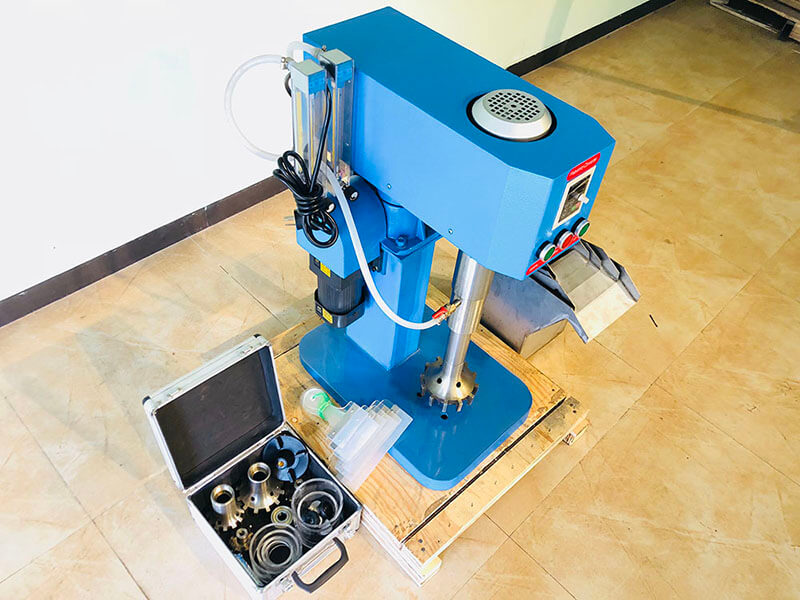
- The lab flotation machine is suitable for separating non-ferrous metals and non-metallic minerals such as coal jadeite and lead zinc lithium ore. The flotation machine is a mechanical equipment used to complete the flotation process. In a flotation machine, the slurry treated with reagents is stirred and aerated to make some of the ore particles stick onto the bubbles; It floats to the pulp surface and scrapes out to form foam products, while the rest is retained in the pulp to achieve the purpose of separating minerals.
- Purpose: Enrich fluorite concentrate and improve grade
- Experimental process: The function of the laboratory flotation machine is sorting equipment that requires the addition of conventional reagents. The chemicals for handling different materials also vary. Pour the slurry into the tank and dilute it with water to the desired concentration. Start the motor and add an appropriate amount of flotation agent according to the experimental requirement. When foam is generated in the tank, turn on the switch of the scraper part to start flotation. After reaching the specified flotation time, turn off the motor and stop the impeller and scraper from running.
- Summary: Other minerals like gold sulfide, lead zinc, copper ore, and lithium ore are also suitable for flotation to further improve the grade.
Types Of Flotation Machine
- Mechanical stirring flotation machine
During the operation of this flotation machine, the inflation and stirring of the slurry are completed by the impeller and stator, and it belongs to the external air suction flotation machine. Generally, it will suck air near the mechanical stirring device at the bottom of the flotation tank. The advantage is that during operation, the flotation machine achieves self-subsection of air and slurry, and when the intermediate ore returns, it achieves self-flow without the need for auxiliary equipment. The overall investment is low, the equipment is easy to operate and maintain, but the inflation amount is small, the power consumption is high, and the wear and tear is strong.
2. Inflatable stirring flotation machine
Although this flotation machine is equipped with stirring devices (impeller, stator), an external air-blowing device is still required for forced air blowing, as the stirring device only serves to mix the slurry and distribute the airflow. In addition to a set of compressed air systems, the operation room should add a pump for returning middlings. The inflatable stirring flotation machine equipment includes XCF, KYF, XJC, and CLF coarse particle types.
3. Inflatable flotation machine
The main difference between an inflatable flotation machine and a stirring flotation machine is that it does not have a stirring device and requires air to be provided by a specially designed pressure fan. The equipment is a flotation column, which has a simple structure and is easy to use. Due to the absence of an agitator, which will affect the flotation effect. The aerator is prone to calcium deposition and is not conducive to air dispersion.
Above machines are for fluorite ore beneficiation experiment, different ore nature will adopt different mining solutions with various equipment. JXSC lab mineral processing equipment manufacturer has more than 38 years of experience in mining processing. We provide laboratory equipment suitable for minerals such as gold, tin, tungsten, lead, zinc, tantalum, niobium, iron, manganese, silver, titanium-iron, etc. Machines include laboratory jaw crusher, hammer crusher, roller crusher, grinding equipment, mineral separating equipment, screening, washing equipment, etc. Welcome to consult if you are interested in our lab equipment!

